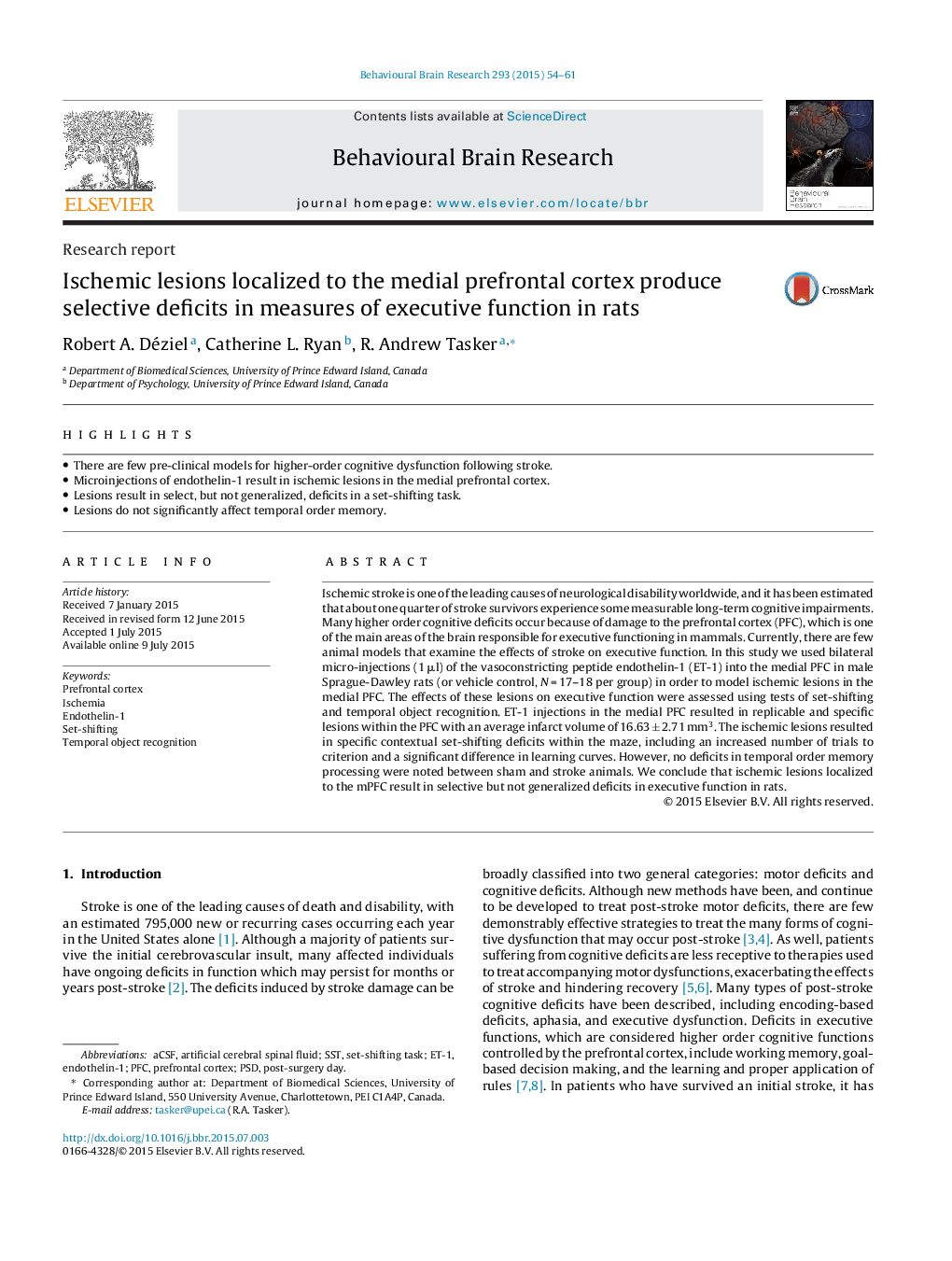| Article ID | Journal | Published Year | Pages | File Type |
|---|---|---|---|---|
| 6256591 | Behavioural Brain Research | 2015 | 8 Pages |
â¢There are few pre-clinical models for higher-order cognitive dysfunction following stroke.â¢Microinjections of endothelin-1 result in ischemic lesions in the medial prefrontal cortex.â¢Lesions result in select, but not generalized, deficits in a set-shifting task.â¢Lesions do not significantly affect temporal order memory.
Ischemic stroke is one of the leading causes of neurological disability worldwide, and it has been estimated that about one quarter of stroke survivors experience some measurable long-term cognitive impairments. Many higher order cognitive deficits occur because of damage to the prefrontal cortex (PFC), which is one of the main areas of the brain responsible for executive functioning in mammals. Currently, there are few animal models that examine the effects of stroke on executive function. In this study we used bilateral micro-injections (1 μl) of the vasoconstricting peptide endothelin-1 (ET-1) into the medial PFC in male Sprague-Dawley rats (or vehicle control, N = 17-18 per group) in order to model ischemic lesions in the medial PFC. The effects of these lesions on executive function were assessed using tests of set-shifting and temporal object recognition. ET-1 injections in the medial PFC resulted in replicable and specific lesions within the PFC with an average infarct volume of 16.63 ± 2.71 mm3. The ischemic lesions resulted in specific contextual set-shifting deficits within the maze, including an increased number of trials to criterion and a significant difference in learning curves. However, no deficits in temporal order memory processing were noted between sham and stroke animals. We conclude that ischemic lesions localized to the mPFC result in selective but not generalized deficits in executive function in rats.
